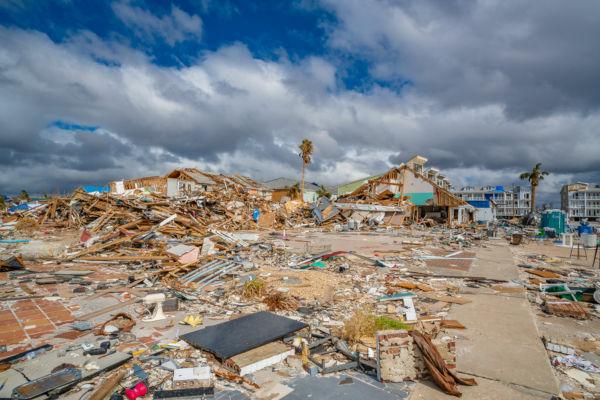The process of soil degradation can occur in many different ways, usually resulting from its misuse and conservation by human activities. The occurrence of these situations may be associated with nutrient depletion or vegetation removal, among other numerous factors.
The main forms of soil degradation, that is, the types with which this problem presents itself, are:
1. desertification
THE desertification consists of the process of degradation and depletion of soils that occurs in regions with arid, semi-arid and subhumid, where rainfall is not greater than 1400mm per year and, therefore, evaporation is greater than the infiltration. Desertification gets its name because it causes a change in the landscape to something close to a desert landscape, although not necessarily the formed area can be considered as such.
Although this problem has some natural causes, such as the climate and the predisposition for its occurrence, its main determinants are associated with anthropic practices, such as deforestation, fires, intensive use of land by agriculture, mining, incorrect irrigation, among others.
2. Sandization
Sandization is often confused with desertification, but these are different phenomena. Sandization consists of the formation of sandbanks in soils that already have a sandy consistency in regions that, unlike the areas that are desert, have wetter climates and with greater volumes of rain, where water infiltration and runoff are higher than the evaporation.
The causes for the sanding process are, above all, related to the removal of vegetation, which protects and firm up the soils. Thus, the rains gradually wash the land and remove its nutrients in a process that can be further intensified by the exhaustive practice of agriculture or livestock. In Brazil, this process is quite common in the southern region.
3. Erosive processes
THE erosion it is one of the best known types of land degradation. It is a natural process that can be intensified by human practices and which consists of wear of soils and rocks with subsequent transport and deposition of sedimentary material that is produced.
Erosive processes, in addition to altering the relief shape, forming craters that can occupy large areas, are also responsible for the removal of nutrients from the soil. In some cases, excessive washing of the surface layer by rainwater - a process called leaching or laminar erosion – makes soils more acidic or unproductive. Furthermore, erosion is also associated with mass movement problems and slope collapse.
Do not stop now... There's more after the advertising ;)
4. salinization
THE salinization it consists of the process of increasing existing mineral salts, to the point of affecting the productivity of soils in a given region. These mineral salts are in the form of ions, such as Na+ and the Cl-, being more common in areas with arid and semi-arid climate, where evaporation rates are very high.
Briefly, the occurrence of salinization is related to the practice of irrigation that uses water with high salt content (remembering that mineral salts are always present in water, such as potassium and many others). Thus, with the evaporation of water, salts accumulate in the soil and increase its salinity. Other possible causes for salinization are the sharp rise in the water table and the evaporation of accumulated salt or brackish water from seas, lakes and oceans.
5. Laterization
Laterization consists of the accumulation of iron and aluminum hydroxides, changing the composition and appearance of soils. This process results mainly from the alteration of the surface layer by chemical weathering associated with its exhaustive washing by leaching.
The laterization process is more common in hot, humid areas of tropical climates and can be intensified by fires and deforestation, as the vegetation helps to protect the soils from the high erosion caused by the water from the rains. Despite being important for the formation of oxisols, laterization can be considered a problem of environmental degradation, as it hinders root penetration and reduces fertility.
6. Direct pollution and contamination
THE direct pollution or contamination is the chemical change in the composition of soils, often making them infertile. It is an eminently anthropic problem and caused by the excessive use of pesticides, pesticides and fertilizers in agriculture and also by the infiltration of polluting organic materials in areas of dumps, landfills and even cemeteries, where there is a high rate of formation in slurry.
In addition to making soils unproductive and affecting the quality of life of the population that lives on them, this type of contamination can affect the water table, the vegetation of a given location and even the fauna, harming the functioning of ecosystems. For this, there must be greater social awareness and the adoption of measures to reduce the pollution of soils and its natural resources.
By Me. Rodolfo Alves Pena

